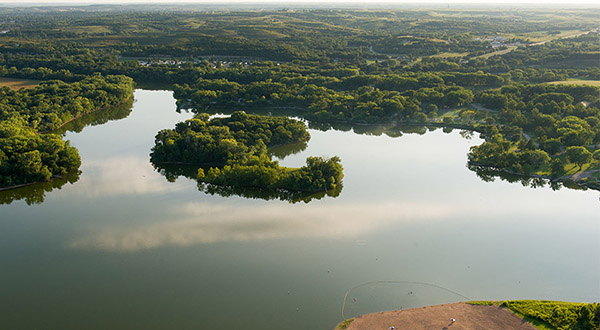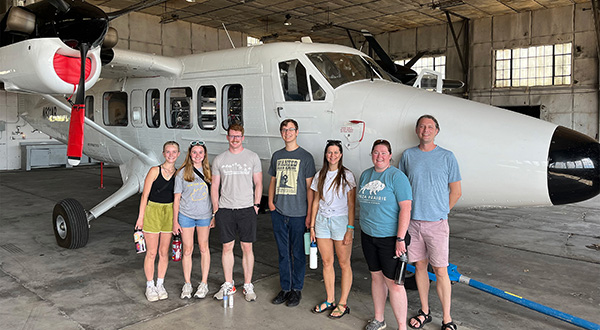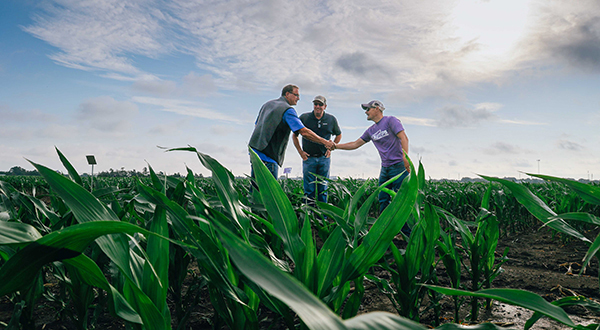Water, waste and a wicked problem
Prathap Parameswaran leads collaborative, use-inspired project to bring circular waste recovery system to High Plains
eeting the needs of Kansas communities has always been at the heart of Kansas State University’s mission as a land-grant institution.
In the case of Prathap Parameswaran and his carefully assembled, cross-disciplinary research team—spanning K-State and three partner institutions across the High Plains — their work to scale up a circular waste-recovery system could have an immediate impact on Kansas communities by literally turning animal waste into valuable resources, particularly water.
If successfully implemented by the end of the four-year project, the system would mark an important step toward addressing the complex challenges surrounding the Ogallala Aquifer, the region’s primary groundwater source.
“I think the 800-pound gorilla in the room is the depletion of the Ogallala aquifer,” said Matt Sanderson, professor of sociology, anthropology and social work at K-State and member of the project’s research team. “In that context, you’re dealing with a wicked problem, and not wicked in a moral sense, but in one that doesn’t have easy solutions. It only has tradeoffs, and trying to optimize remaining use of that water. This technology clearly has a role to play, and these wicked problems require multidisciplinary projects like this one.
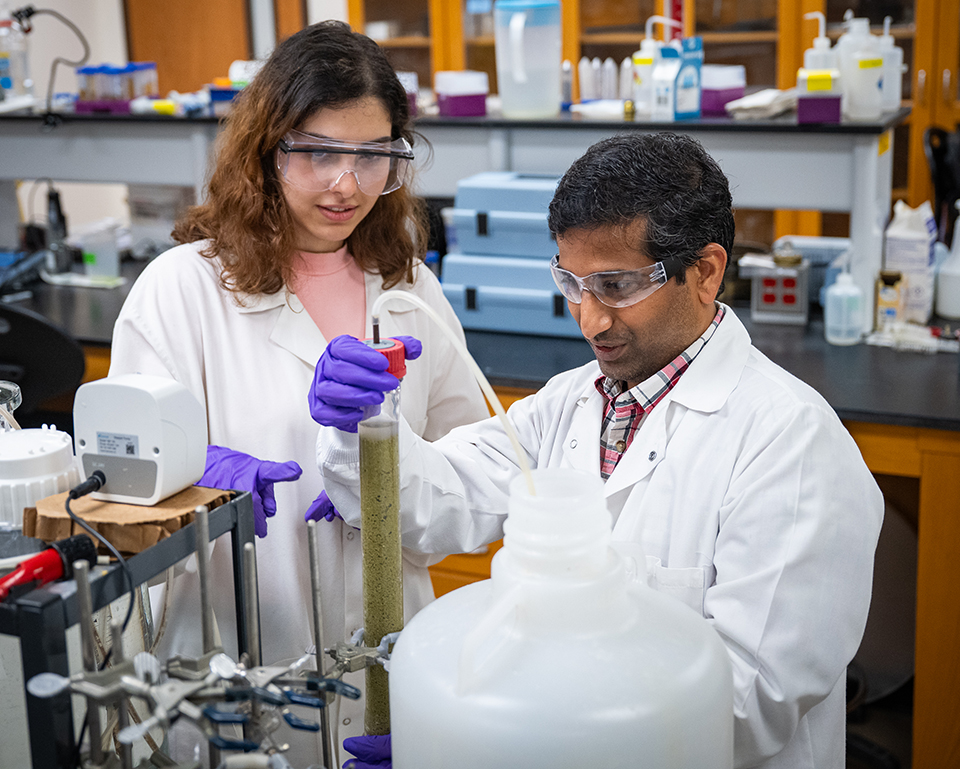
Prathap Parameswaran works with Parnian Mohammadiansemnani, a graduate research assistant in civil engineering, in his lab. | Download this photo.
The project builds on Parameswaran’s past work with anaerobic membrane reactors, which have shown the ability to take waste and produce renewable energy, extract useful chemicals and provide water, but scales up the operation and does so on-site in communities that can benefit the most from their use.
“It’s not a pie-in-the-sky idea – the unit exists,” said Parameswaran, associate professor of civil engineering and university outstanding scholar in the Carl R. Ice College of Engineering. “The way we’ve proposed the project is we will strengthen the science and the technology in the first three years, and in the last year, we will actually try to put one of our field trailers out there.”
Finding expertise across state lines
Funded through the National Science Foundation’s Research Infrastructure Improvement Focused Engineering Collaboration program, the $6 million project goes beyond the scope of just engineers. It requires a broad, multidisciplinary approach that brought in three other institutions in the University of Nebraska-Lincoln, Oklahoma State University and Seward County Community College, an advisory board with input from industry, as well as the communities serving as a pilot for this technology.
“Without the expertise, you cannot run this,” Parameswaran said.
The core partnership organically grew from established connections at K-State, extending outward to institutions and individuals who could offer complementary expertise across the region's top livestock-producing states.
K-State, which received $2.5 million as part of the collaborative grant, will provide the foundational technology and social aspects, including technoeconomic analysis and life-cycle assessment expertise. Other K-State members of the research team include Joe Parcell, professor of agricultural economics, and Jikai Zhao, assistant professor of biological and agricultural engineering.

Close-up of an anaerobic membrane. | Download this photo.
Team members from the University of Nebraska-Lincoln include Siamak Nejati, Bruce Dvorak and Mona Bavarian. They will provide specialized knowledge in membrane technology — a crucial component for filtration — and regional feasibility assessment.
Oklahoma State University’s portion of the team, which includes Kiranmayi Mangalgiri and Mark Krzmarzick, will focus on water reuse, specifically taking the water recovered and polishing it further. It also includes OSU’s Doug Hamilton, a swine expert who brings practical knowledge of current waste systems for comparison, as well as Michael Long, a sociology expert who will lead efforts to identify and overcome social barriers for technology adoption in the Great Plains region.
Rounding out the partnership is Seward County Community College, which provides a crucial connection to the local community and industry workforce. Students from SCCC, who often go directly into the livestock industry, will be involved in trials and internships, developing the necessary technical skills to operate and maintain the new systems.
In addition to the academic partners, the team is supported by a broad advisory council made up of producers, groundwater management districts and user associations who recognize the urgency of the problem.
“I’ll say this about the advisory council – I think if they opened our email and read the summary of what we’re doing, they were immediately on board,” Parcell said. “Because they recognize how important this is. And that was a strength of our proposal, too. We had broad-based buy-in from all three states.”
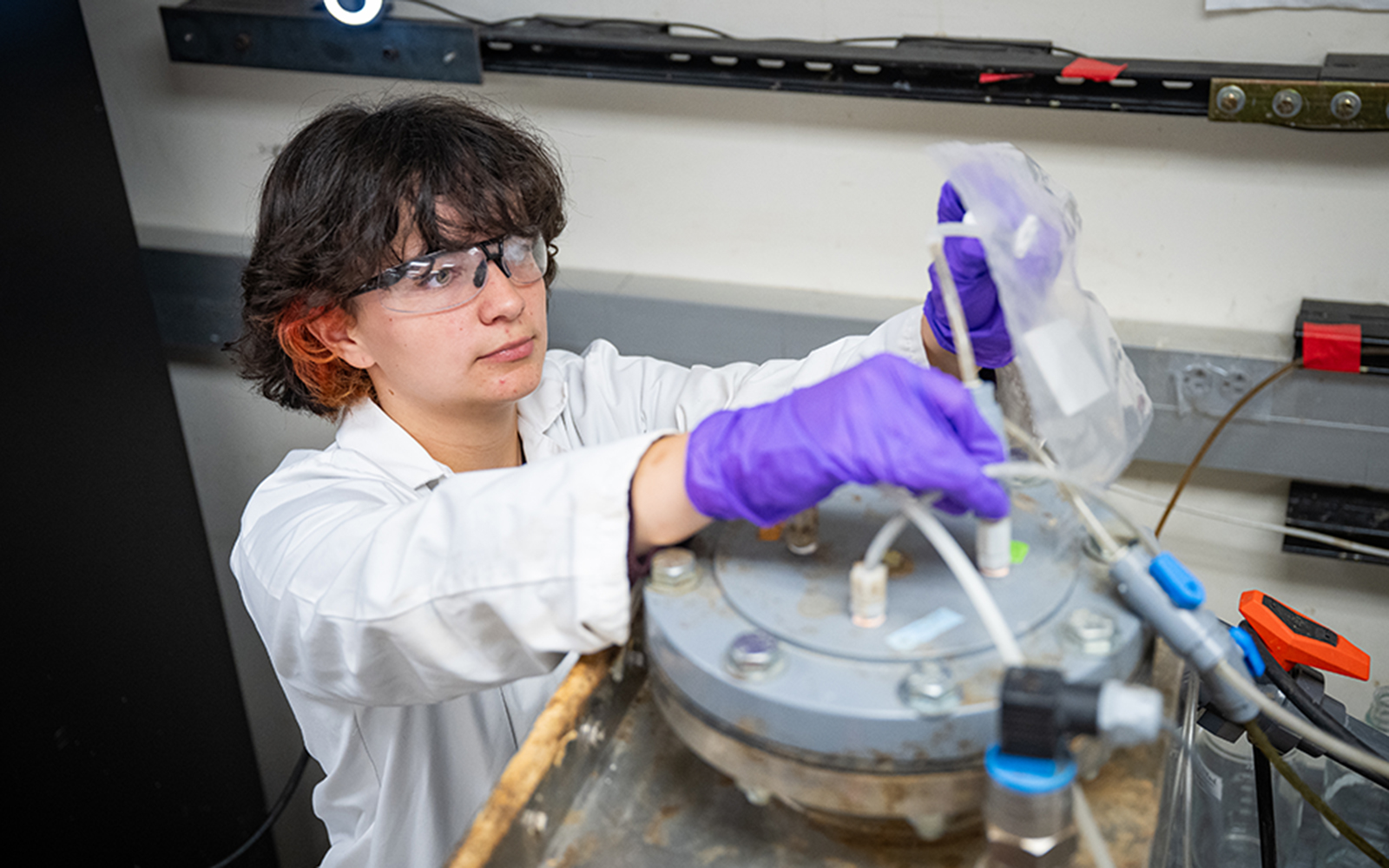
Sara Vulgamore, senior in environmental engineering, collects a headspace gas sample for analysis on a gas chromatopgraph. | Download this photo.
Closing the loop on waste
At the heart of the project is developing a circular system designed to manage the enormous volume of livestock wastewater, which is abundant in the region.
Currently, most livestock operations in the High Plains handle manure by land-applying it or storing it in lagoons. While this removes the waste, it is often not optimal, leading to water loss, nutrient runoff and buildup, and odor issues.
The new technology addresses these problems by aiming to polish and clean the water, while also pulling off and condensing valuable nutrients. Those include nitrogen and phosphorus, which have practical uses such as commercial fertilizer.
“The crux of what we’re doing is about water access,” Parcell said. “We're creating a process to polish and clean water up enough so that it can be reused in the livestock system. At the same time, we're also pulling in those carbon and nutrient elements, such as biogas, to try and value in different ways and maybe make this process more economical so it becomes more widely adopted."
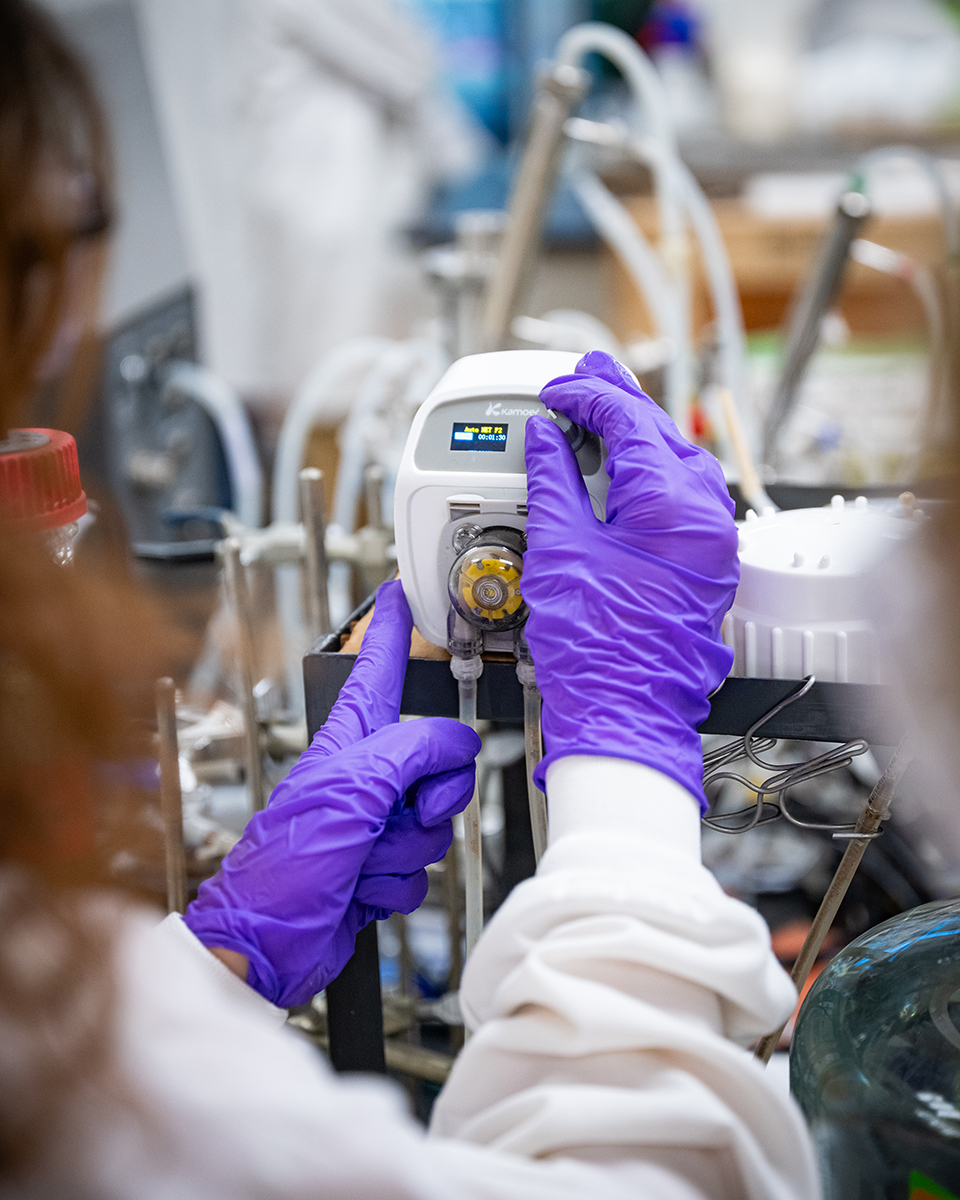
A student in Prathap Parameswaran’s laboratory sets the pump flow rate prior to reactor operation. | Download this photo.
Additionally, the process would also have the potential to reduce the odors that often plague communities downwind of feedlot operations.
“The success of this proposal is in that it meets the needs of the community,” Zhao said. “NSF grants have supported the development of many advanced technologies, but this project is focused on connecting these innovations more closely with the practical needs of people in Kansas, Oklahoma and Nebraska. This technology will be used to address current existing challenges faced by regions in these three states in a meaningful way.”
The initial focus will be on swine wastewater, as the team has three years of preliminary data from Parameswaran’s previous research.
However, the knowledge gained from the research could apply to other sectors like dairy and beef cattle, and it could lead into insights into the potential for industrial pretreatment in the food processing industry and municipal water systems.
The technology is primarily membrane-based, and a key area of research will be working with the University of Nebraska-Lincoln team to develop advanced membranes to handle the difficult conditions and prevent fouling — a major issue in such systems.
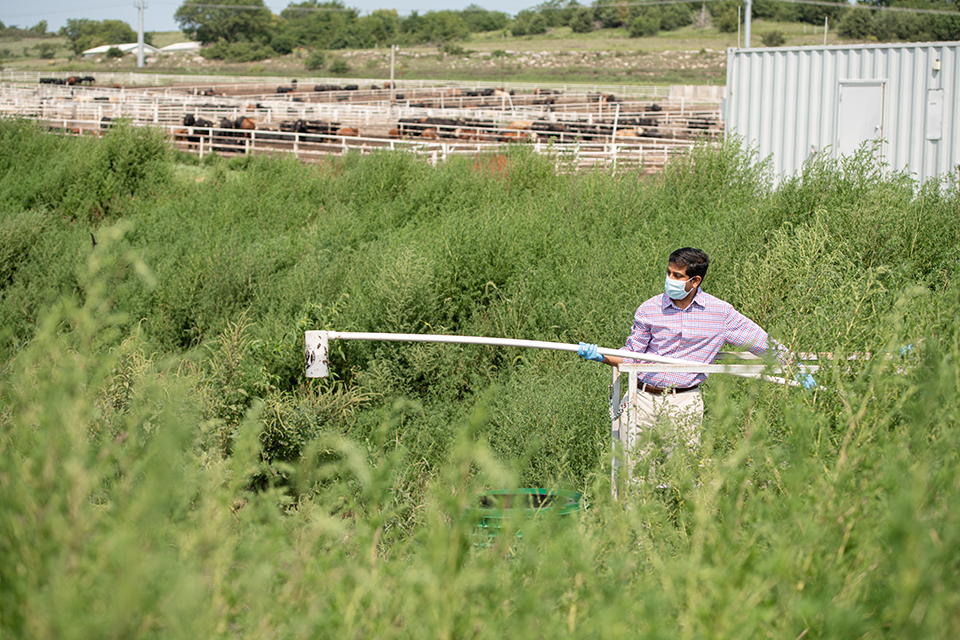
Prathap Parameswaran collects a sample of wastewater at K-State's pilot-scale anaerobic membrane bioreactor. | Download this photo..
From lab to field: A phased approach
The project is structured over four years, with a clear path to real-world application, which is a goal of the NSF program providing the funding.
The first three years focus on strengthening the technology. This involves refining the system at the pilot scale, generating long-term data and rigorously studying its impact.
The last year will culminate in a major step toward adoption: a field demonstration trial. The team plans to deploy one of their mobile field trailers in a real-world setting to test its effectiveness at scale.
Adoption is not just a technological challenge, however. It also involves social and economic factors.
“The Ogallala is a finite resource. Anything we can do to close loops and enhance the sustainability of this aquifer adds value.”— MATT SANDERSON
Parcell and Sanderson, along with other social scientists and economists on the team, will work on solutions to issues that have slowed adoption of this type of technology in the past, including government policy decisions and the economic proposition of being an early adopter.
“Part of the adoption equation is where you are at, and how far do you have to pump water now?” Parcell said. “What are the policies and the incentives going to be? We’ve seen incentives to install these types of facilities in the past. What will they look like in the future?”
The long-term vision is an automated system with a control board that can be operated remotely, though a skilled, locally trained workforce will still be necessary for troubleshooting, analysis and maintenance. This focus on workforce development through Seward County Community College ensures that the benefits of the technology will be fully realized at the local level.
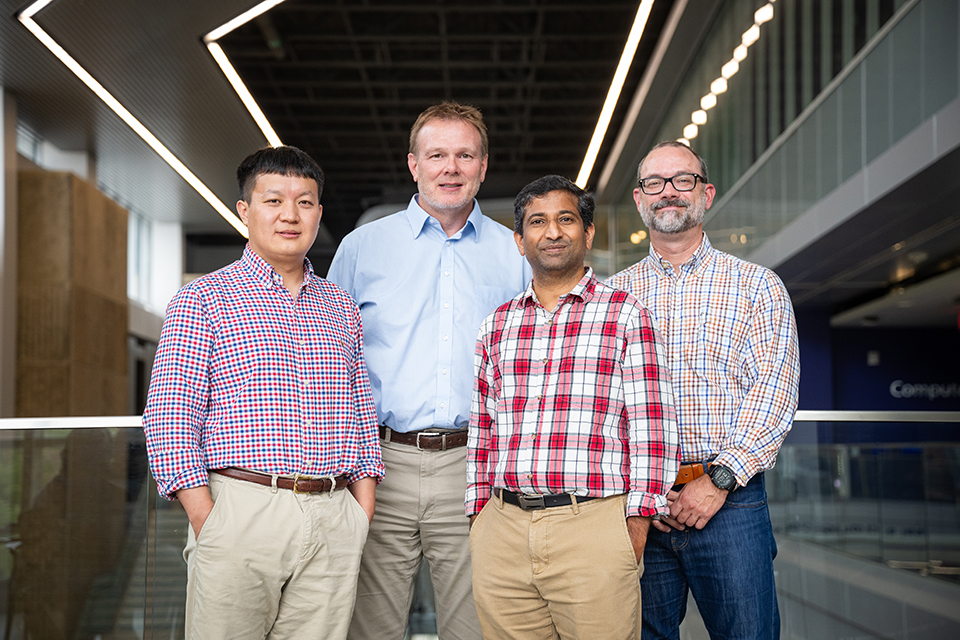
Jikai Zhao, Joe Parcell, Prathap Parameswaran and Matt Sanderson. | Download this photo.
By turning animal waste from a liability into assets, like clean water, fertilizer and energy, the team hopes to mobilize a long-term solution that helps to ensure the sustainability of one of the world's most vital water resources.
“This was funded for a variety of reasons, but I think probably at the top of that list is this is the second-largest freshwater aquifer in the world,” Sanderson said. “There is no more recharge, effectively, coming into this aquifer. It’s a finite resource. Anything we can do to close loops and enhance the sustainability of this aquifer adds value.
“It’s a great team to try and do it. Now the work begins.”
###
More K-State news
Get K-State news in your inbox
Subscribe to receive K-State news directly to your inbox every Monday.

